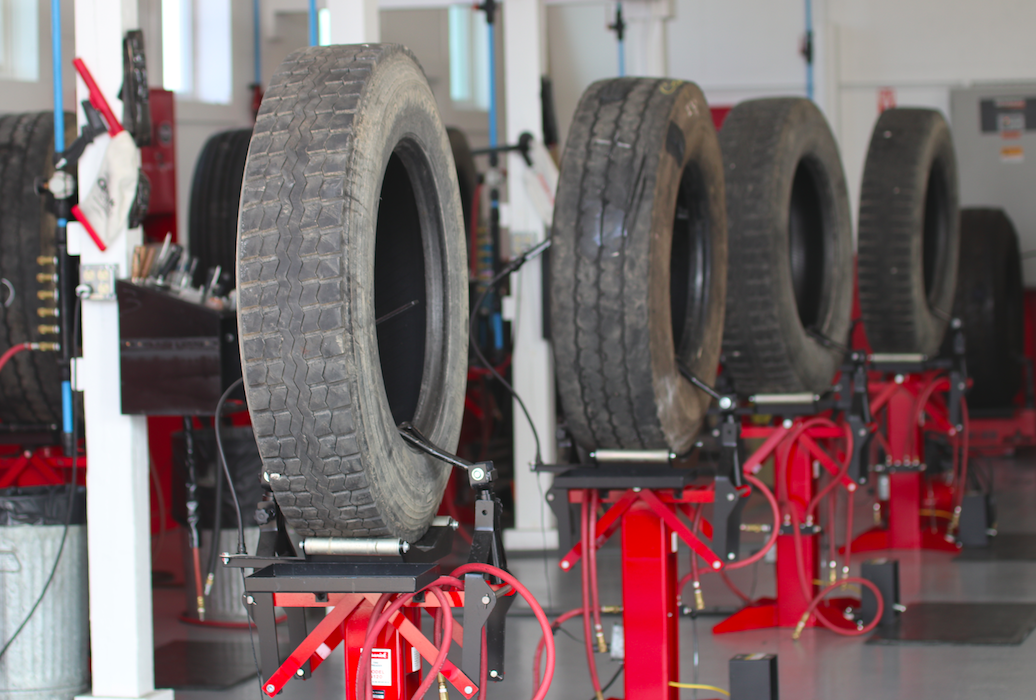The Ultimate Tire Fixing List for Security and Savings
Maintaining optimal tire problems is a basic element of making sure security when driving and taking full advantage of cost-efficiency in the future. From tire pressure to step depth, each component plays an important duty in the general performance of your automobile. There are crucial elements and checkpoints that frequently go undetected however can significantly influence the life expectancy and functionality of your tires. By sticking to a detailed tire repair service checklist, you can proactively address these locations and potentially stay clear of unpredicted concerns. Allow's explore the essential actions that can guard both your security and your savings - morris tire.
Significance of Tire Maintenance
Routine tire maintenance is essential for guaranteeing automobile safety and security and extending the lifespan of your tires. By properly maintaining your tires, you not only enhance the overall performance of your car however likewise decrease the danger of mishaps brought on by tire-related problems. Tire stress must be regularly checked and gotten used to the manufacturer's specifications to guarantee optimal fuel efficiency and traction on the road. Additionally, turning your tires at suggested intervals promotes even walk wear, leading to a much longer life expectancy for your tires and much better handling of your vehicle. Monitoring the tread depth is likewise necessary, as damaged treads can result in lowered grip, particularly in wet or icy problems.
Additionally, normal tire examinations can assist determine possible issues such as slits, cuts, or bulges, which if left unattended, might lead to tire failing. tire tracks morris il. Correct alignment and harmonizing contribute to a smoother adventure, enhanced gas effectiveness, and avoidance of unequal tire wear. To conclude, prioritizing tire maintenance not just ensures your security when traveling yet also conserves you money by prolonging the life of your tires and avoiding pricey fixings or replacements
Monitoring Tire Stress
Making sure the appropriate rising cost of living of your tires is an essential facet of vehicle maintenance that directly influences safety and performance. Proper tire pressure not only improves handling and stopping but also adds to sustain efficiency. To inspect tire stress, make use of a tire pressure gauge to determine the atmospheric pressure in each tire, including the extra. Describe the vehicle maker's advised PSI (extra pounds per square inch) levels, typically discovered on a sticker label inside the vehicle driver's door, in the proprietor's guidebook, or online. It is recommended to inspect tire pressure when the tires are chilly, as driving warms the tires and raises stress readings. Remember to analyze stress degrees on a regular basis, a minimum of as soon as a month, and eventually journeys. Overinflated or underinflated tires can lead to unequal tread wear, lowered traction, and potential blowouts. By keeping appropriate tire pressure, you not just ensure your security however likewise extend the lifespan of your tires and optimize fuel economy.
Examining Tread Deepness
To make sure optimal safety and performance of your car, a critical element of tire maintenance entails examining the walk depth regularly. The step on your tires plays an essential duty in preserving grip on the roadway, especially in damp or slippery conditions - discount tires morris il. Insufficient step depth can bring about reduced grasp, longer braking ranges, and an increased risk of hydroplaning
The majority of new tires have a step depth of around 10/32 to 11/32 of an inch. The minimal lawful walk deepness restriction is 2/32 of an inch in a lot of states, but for improved safety, it is recommended to change tires before they reach this limit.

Consistently examining your step depth and replacing tires when essential will not just boost your safety on the roadway yet likewise add to cost savings by boosting fuel effectiveness and expanding the lifespan of your tires.
Identifying Tire Damages
Evaluating your tires for indicators of damages is critical for keeping roadway security and stopping possible threats. When examining your tires, look out for cuts, punctures, bulges, cracks, official website and any kind of various other abnormalities on the walk or sidewall.

Expanding Tire Lifespan
Routine upkeep methods and correct driving practices are essential elements in maximizing the durability of your tires. To expand the lifespan of your tires, begin by guaranteeing they are correctly pumped up according to the manufacturer's suggestions. Underinflated tires can bring about raised wear and lowered gas efficiency. Furthermore, revolve your tires on a regular basis to advertise even tread wear. This method assists to extend the life of your tires by ensuring that they use down consistently. Maintaining your wheels properly aligned is likewise vital in protecting against uneven wear patterns that can shorten tire lifespan. Moreover, staying clear of sudden quits, doglegs, and speeding can lower unnecessary wear and tear on your tires. Finally, consistently check your tires for indicators of damages, slits, or irregular wear, and attend to any type of concerns promptly to More Bonuses prevent more damage. By complying with these practices, you can dramatically extend the life expectancy of your tires, conserving you money over time.

Verdict
Finally, regular tire upkeep is important for guaranteeing safety and security and conserving money in the future. By inspecting tire stress, inspecting step depth, find more information recognizing tire damage, and extending tire life-span, chauffeurs can protect against mishaps and pricey repair services. Prioritizing tire upkeep is a simple yet effective means to stay risk-free on the road and prevent unnecessary costs.